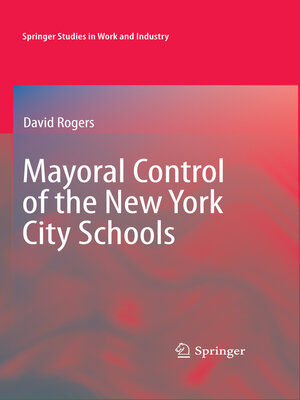Mayoral Control of the New York City Schools
ebook ∣ Springer Studies in Work and Industry
By David Rogers

Sign up to save your library
With an OverDrive account, you can save your favorite libraries for at-a-glance information about availability. Find out more about OverDrive accounts.
Find this title in Libby, the library reading app by OverDrive.



Search for a digital library with this title
Title found at these libraries:
| Library Name | Distance |
|---|---|
| Loading... |
This is a book about the ambitious reform strategy known as mayoral control ini- ated to transform the dysfunctional system of urban education in the United States. I use the term dysfunctional to refer to the inability of urban school districts over the past 50 years to reduce the learning gap between poor students and their middle class peers, despite a host of reform efforts including desegregation, compensatory programs, and decentralization. Since the mid-1990s, the idea of mayoral control has generated considerable interest. Several large cities have introduced it such as Boston, Chicago, Cleveland, Detroit, Baltimore, and Washington (Henig and Rich 2004; Wong et al. 2007). Although the latter have completed a quantitative study of mayoral control's impact on student performance in over 100 cities, a case study of the New York experience nevertheless illuminates the capacity of this tool for transforming urban education. Because of the size of the NYC system – roughly 1.2 million students – and its economic, social, and ethnic diversity, it faces the myriad problems of urban edu- tion writ large that impede efforts to implement change in these schools.







